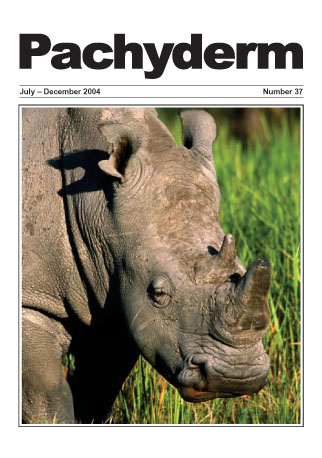The concept of home range in relation to elephants in Africa
Abstract
The article outlines the concept of home range, compares different methods that have been used to determine ranges and discusses their relevance to elephant ecology. After reviewing earlier works on the concept the author focuses on core areas and reviews four methods of assessing the structure of core areas: minimum convex polygon, harmonic mean, cluster and kernel. 'Rainfall is used as a variable across elephant habitats to explain range variation' and the author uses Table 2 to illustrate a comparison of the size of the range, the number of elephants (in the study area), and the rainfall in mm in various ecosystems across the continent. He notes that humans have impacted on the pattern of elephant range and that elephants wherever possible tend to avoid areas of illegal hunting and human settlements. Concludes it is important to understand core areas and to link their relevance to elephant conservation, and to appreciate that rainfall is basic to the difference in range size, but that human activity is playing and ever increasingly important role.
Downloads
Published
How to Cite
Issue
Section
License
Copyright (c) 2004 Ferrel V. Osborn

This work is licensed under a Creative Commons Attribution-NonCommercial 4.0 International License.




